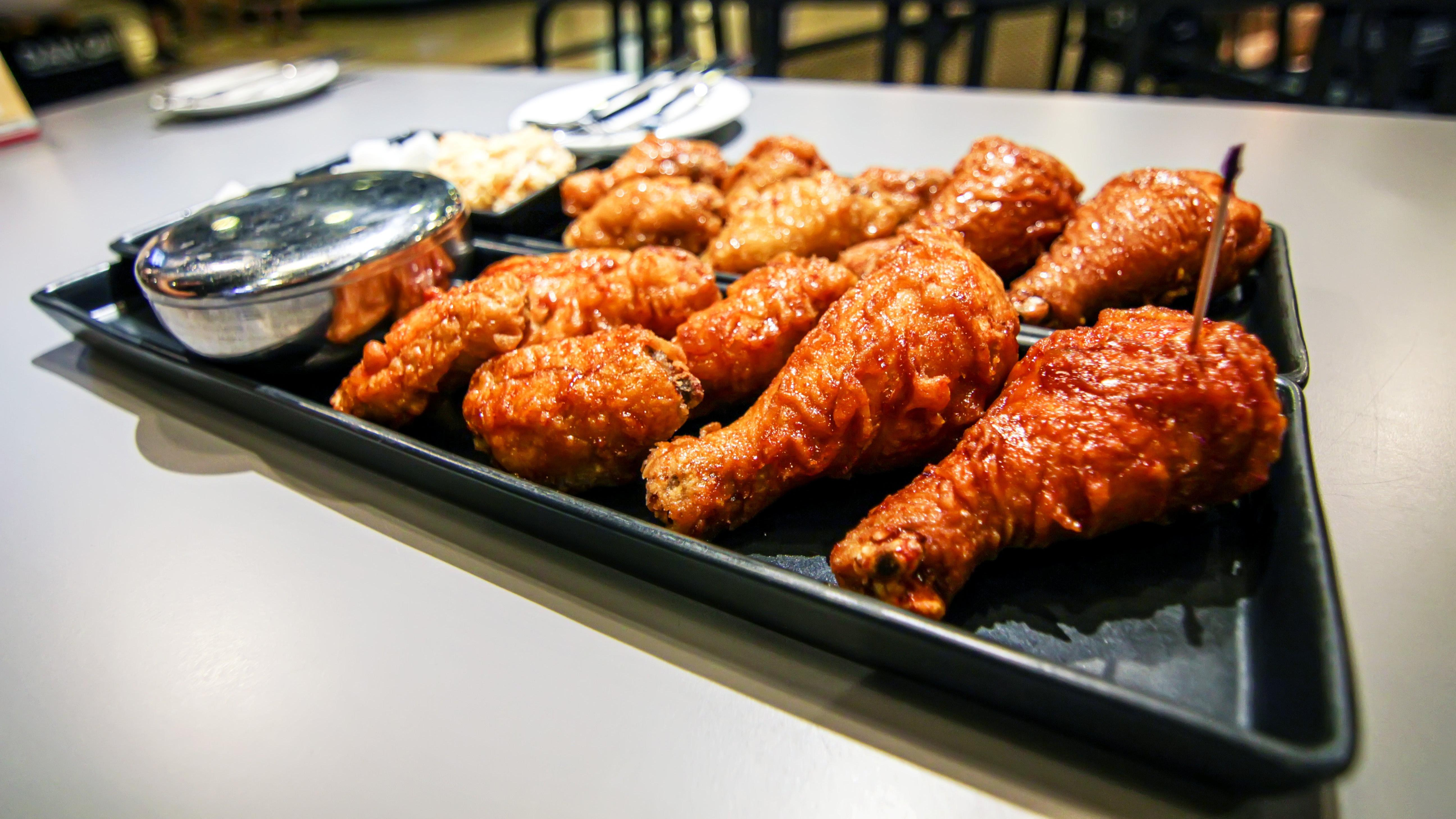Korean Fast-Casual Restaurants Are On The Rise
Korean food has been popular in America for a long time, but faster formats are gaining steam.
Considering it originates from such a geographically small country, Korean food has had a big impact on Americans' appetite for international flavors. Going out for a special night and choosing Korean food is one thing, but the cuisine is starting to break into quick-service formats, too—and one particular fast-casual chain just closed out its biggest year yet. Put on your bibs, everyone, we're going to Bonchon for some wings.
What type of food does Bonchon serve?
Bonchon is a fast-casual chain that specializes in Korean fried chicken. This variety of fried chicken has some unique characteristics, one of which is its double-fried preparation. Double-frying the bird gives it an extra level of crunch, which means that even when Bonchon's sauce (either soy garlic or spicy) is brushed on each piece, the chicken will stay crunchy for a long period of time.
Other menu items include mandu (Korean potstickers), takoyaki (octopus pancake balls), Korean tacos, japchae (a Korean glass noodle dish), kimchi, pickled radish (a traditional Korean side to fried chicken), and more. And apparently the American masses love Bonchon, because the company has said in a press release that 2023 was its best sales year to date.
Bonchon is expanding to new American markets
While Bonchon has more than 430 international locations, the bulk of them reside in the United States—and there are more restaurants coming in 2024. Expansions are planned in southern Florida; Tucson, Arizona; Little Rock, Arkansas; and Ann Arbor, Michigan.
The chain is also moving into other types of formats, such as mall food courts. It opened two ghost kitchens and its first hotel location last year, and is planning its first airport location in 2025. And on the international front, Bonchon opened its first location in France last year, with plans to open in Spain and Taiwan as well.
Korean food continues to be popular in the United States
Korean food has had a prolonged period of attention in the U.S. When I was young, I didn't often see Korean food outside of the Korean supermarket, but most grocery stores I go to now stock kimchi, gochujang (Korean fermented red pepper paste), popular Korean brands of ramyeon noodles, and so on. These are now just easily identifiable pantry items for many Americans, including non-Koreans.
Then there's the matter of how Korean pop culture has also changed the way Americans see Korean food. McDonald's featured a BTS celebrity meal in 2021 in collaboration with the popular K-pop band, which came with two special Korean-inspired dipping sauces—a sign of Americans' increased appetite for Korean flavors.
The popular Netflix show Kim's Convenience also shined a spotlight on Korean culture in North America, as did the success of the 2020 film Minari (the title refers to water dropwort, a Korean ingredient). Many other releases in recent years have similarly kept Korean culture in the American consciousness. And all that has clearly fueled the one really important thing relevant to this conversation: our appetites.
Bonchon's success is only one example of Korean cuisine's influence in North America. Shake Shack is currently offering a limited-time Korean-inspired menu in the form of a Korean fried chicken sandwich, along with a Korean BBQ burger.
Korean corn dog chains continue to grow in popularity, and Korean-flavored items regularly make their way to packaged snacks like potato chips (Kettle brand), almonds (Blue Diamond), and even pork rinds (Southern Recipe Small Batch). It was just a matter of time before Korean fast-casual chains gained a foothold—and if you don't have any in your area, it probably won't be long until you see them pop up.
